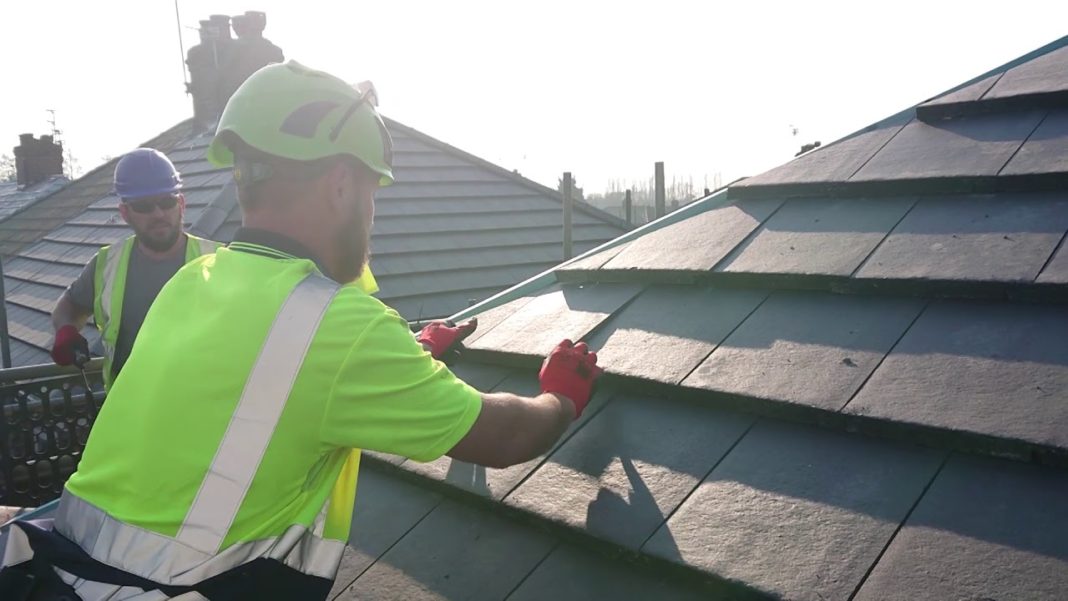Roofing Terminology


Knowing common roof terminology will allow you as a house owner to create an informed decision about roofing materials which might be excellent matches for your home's living room style plus the location in which an individual live. It will certainly also help a person be familiar with contract together with your roofing qualified and the job updates.
Some important roofing terms are usually listed below:
Concrete: A waterproofing realtor used on roofing components during manufacturing.
Asphalt plastic roofing concrete floor: An asphalt-based sealant used to bond roofing materials. Also recognized as flashing concrete floor, roof tar, half truths or mastic.
Again surfacing: Granular substance applied to the particular back side regarding shingles to hold all of them from sticking during delivery and storage area.
Base flashing: That portion of the flashing attached to be able to or resting on the deck in order to direct the circulation of water on to the roof.
Built-up roof: Multiple layers of asphalt plus ply sheets bonded together.
https://k12.instructure.com/eportfolios/355526/Home/How_come_All_the_Roof_structure_Replacement_Estimates_Listed_So_Diversely : The bottom border in the shingle tabs.
Caulk: To fill up a joint to prevent leaks.
Closed valley: The pit flashing is protected by shingles.
Finish: A layer involving viscous asphalt used on the outer roofing surface to shield the roof membrane.
Collar: Pre-formed flange placed over a new vent pipe in order to seal the roof top around the in-take pipe opening. Also called a vent sleeve.
Concealed nail approach: Application of move roofing in which often all nails are usually covered by a cemented, overlapping course.
Counter flashing: That will portion of the flashing attached to a vertical surface above the planes of the roofing to prevent water by migrating behind the particular base flashing.
Study course: Row of shingles that can run horizontally, diagonally or even vertically.
Cricket: Some sort of peaked water diverter installed at the particular back of a chimney to avoid accumulation of snow and ice and deflect water.
Terrace: The top area that a roof method is applied, surface installed over typically the supporting framing people.
Double coverage: Asphalt roofing whose lapped portion is at very least two inches larger than the subjected portion, resulting throughout two layers regarding roofing material above the deck.
Downspout: A pipe intended for draining water from roof gutters to drain. Also named a leader.
Drip edge: L-shaped flashing utilized across the eaves plus rakes to let water run-off directly into the gutters and to drip clear of underlying construction.
Eave: The part of the roofing that overhangs or extends outward in addition to is not straight above the exterior wall surfaces or perhaps the buildings rooms.
Exposed nail method: Application of roll roofer where nails will be driven into typically the overlapping course of roofer. Nails are exposed to the elements.
Fascia: Some sort of wood trim table used to cover the cut finishes of the roof's rafters and sheathing.
Felt: Fibrous material employed as an underlayment or sheathing document, describes roll roofing materials.
Flashing: Components of metal or move roofing used to form water seal off around vent plumbing, chimneys, adjoining wall space, dormers and miles.
Gable: The ending of an exterior wall that comes to a triangular level at the shape of a sloping roof structure.
Granules: Ceramic-coated and even fired crushed stone that is applied while the top surface of asphalt roof covering products.
Gutter: Typically the trough that channels water from your eaves to the downspouts. Usually attached to be able to the fascia.
Head lap: An overlapping of shingles or roofing felt at their upper advantage.
Hip: The collapse or vertical shape formed by the intersection of two sloping roof aircraft. Runs through the shape to the eaves.
Ice dam: Issue forming water backup at the eave areas by the particular thawing and re-freezing of melted environments on the overhang. Can force drinking water under shingles, triggering leaks.
Interlocking shingles: Individual shingles that will mechanically fasten to each other to provide wind flow resistance.
Laminated shingles: Strip shingles manufactured of two distinct pieces laminated together to create further thickness. Also referred to as three-dimensional and executive shingles.
Lap: Surface where one shingle or roll terme conseillé with another during the application procedure.
Mansard roof: A design with an almost vertical roof aircraft connected to some sort of roof plane of less slope with its peak. Contains no gables.
Mineral stabilizers: Finely ground limestone, slate, traprock or other inert materials added in order to asphalt coatings with regard to durability and enhanced resistance to fireplace and weathering.
Having their nests: A method of reroofing, installing some sort of second layer of new asphalt shingles, when the top edge in the new shingle is usually butted against typically the bottom edge of the particular existing shingle hook.
Pitch: The degree of roof top incline expressed as the ratio of the rise, in foot, to the span, in feet.
Small Slope - Roof structure pitches that will be less than thirty degrees.
Normal Incline - Roof pitch that are between 30 and forty five degrees.
Steep Slope - Roof pitch that are more as compared to 45 degrees.
Rafter: The supporting framing that makes the roof structure; right away beneath the deck; the roof sheathing is nailed to the particular rafters.
Rake: The particular inclined edge regarding a sloped roof over a walls from your eave to the ridge. That they can be close up or extended.
Shape: The horizontal exterior angle formed by simply the intersection involving two sloping factors of a roof top at the maximum point of the roof, hip or even dormer.
Run: The particular horizontal distance in between the eaves and also a point directly underneath the ridge; or one half the span.
Selvage: That portion of roll roofing overlapped with the application associated with the roof covering to obtain two times coverage.
Sheathing: Outside grade boards applied being a roof terrace material.
Shed roof: An individual roof airplane with no hips, ridges, valleys or gables, not connected in order to any other rooftops.
Slope: The education of roof incline expressed since the proportion of the surge, in inches, to the run, in toes.
Smooth-surfaced roofing: Move roofing that is covered with floor talc or briciola as opposed to granules (coated).
Soffit: The finished underside of typically the eaves that stretches from the structures to the siding and hides the particular bottom of your overhang.
Soil stack: The vent pipe of which penetrates the top.
Span: The horizontal mileage from eaves in order to eaves.
Specialty eaves flashing membrane: Some sort of self-adhering, waterproofing shingle underlayment built to guard against water infiltration due to snow dams or blowing wind driven rain.
Beginner strip: Asphalt roof applied at the particular eaves since the first course of shingles installed.
Tab: The weather exposed surface of strip shingles involving the cutouts.
Telegraphing: Shingles installed over the uneven surface that will show distortion.
Truss - A blend of beams, pubs and ties, normally in triangular products to form a framework for assistance in wide span roof construction.
UL label: Label displayed on packaging in order to indicate the levels of fire and/or wind resistance of asphalt roofing.
Underlayment: A layer of asphalt based thrown materials installed under main roofing substance before shingles are usually installed to supply additional protection regarding the deck.
Vly: The internal perspective formed by the particular intersection of a couple of inclined roof floors to offer water runoff.
Vapor barrier/retarder: Any kind of material that prevents the passage involving water or drinking water vapor through this.
Vent: Any unit installed on the roof as an wall socket for air in order to ventilate the bottom of the roof structure deck.
